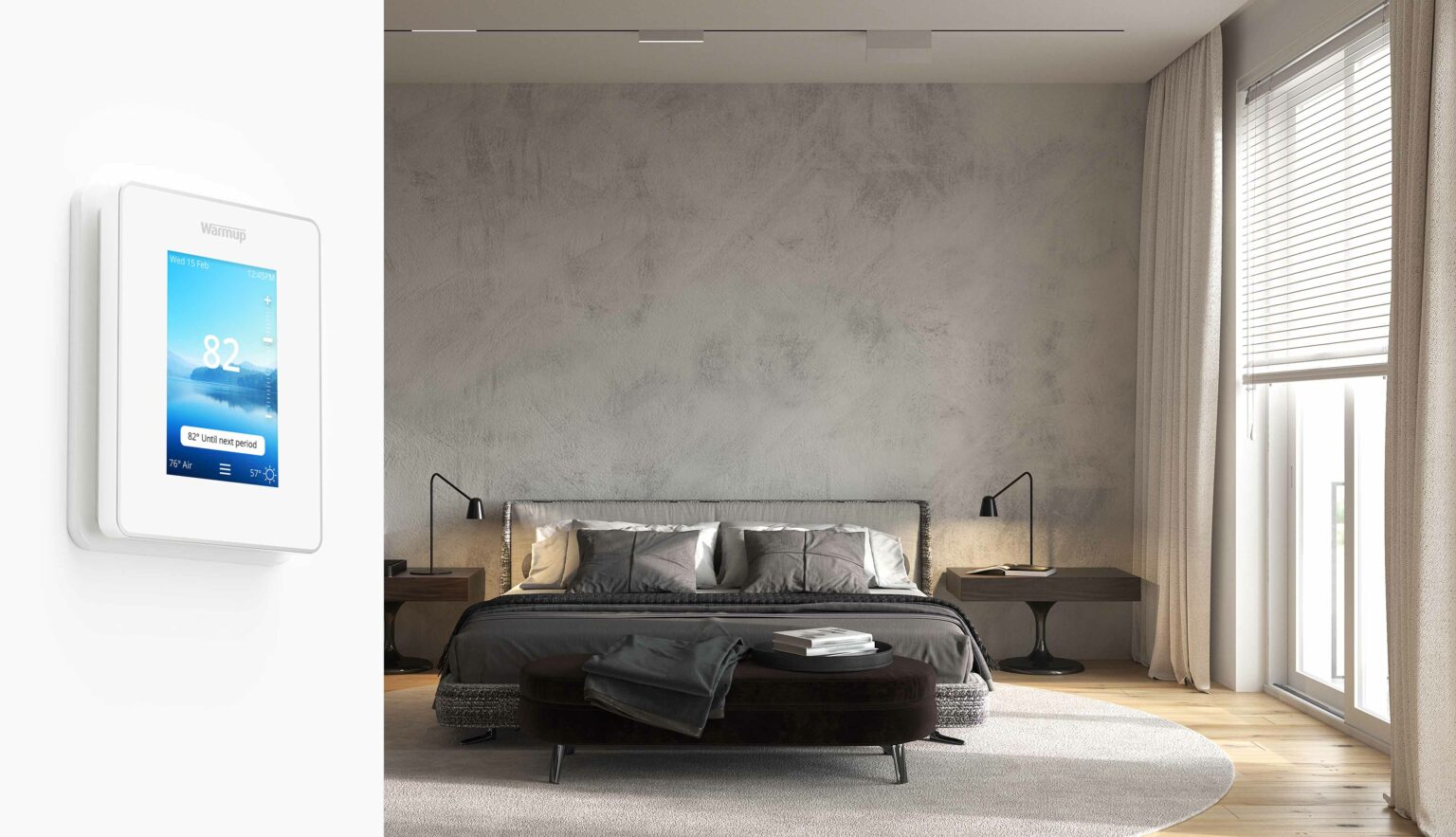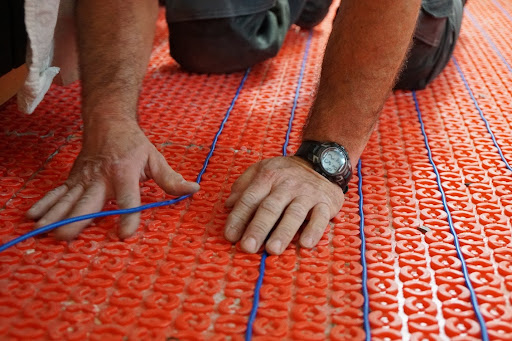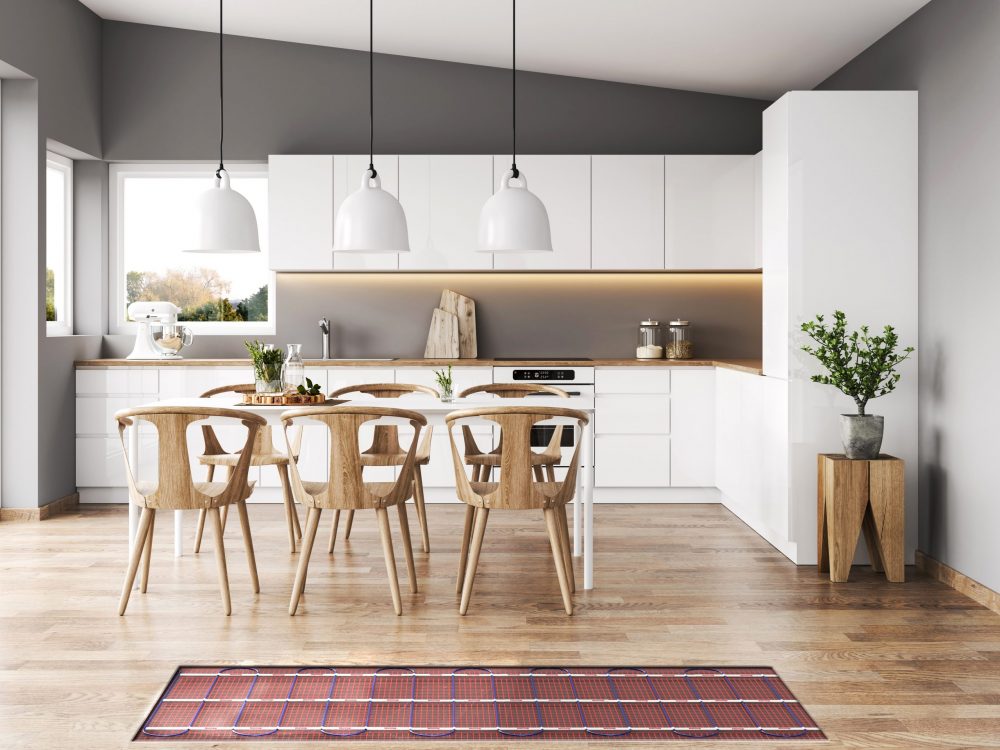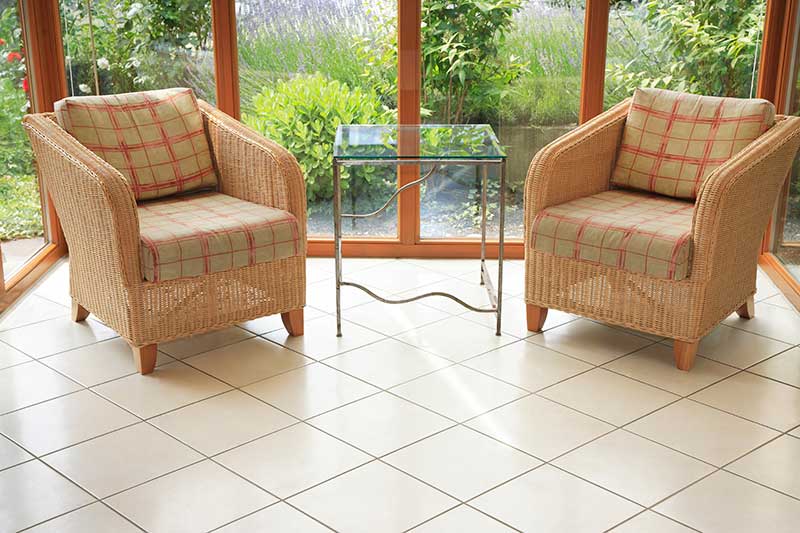Known for its durability, affordability, and wide range of design options, vinyl has become a go-to flooring material for both home renovations and new builds. In this article, we’ll explore the benefits of using radiant floor heating with vinyl plank floors. You’ll learn more about:
- What vinyl plank flooring is
- The compatibility of radiant heating with vinyl floors
- Which floor heating systems will work best for your space
- Which rooms in a home will suit heated vinyl floors
- How to purchase a Warmup heating system
What is Vinyl Plank Flooring?
Vinyl plank flooring is composed of polyvinyl chloride resins (PVC) which are melted down and combined with various other components (such as stabilizers and fungicides) to make a long-lasting and resilient floor finish. Vinyl planks come in long, narrow strips, rather than the traditional square tile shapes. They are a multi-ply product that typically feature four layers:
- An aluminum oxide topcoat to protect against scratching
- A clear protective film that prevents ripping and tearing
- A printed layer intended to replicate the look of wood or stone
- A rigid backing layer composed of almost 90%-pure vinyl, with some types incorporating cork or foam backing too
Vinyl plank flooring is a popular flooring option because there are many varieties to choose from and because it’s also so easy to install, it makes a great DIY project. The size of a plank is usually 3′ or 4′ long with a width of between 4 to 7-3/4 inches, although some can be as large as 9-1/2 inches wide.
Can I use Radiant Heating with Vinyl Floors?
Radiant heat systems pair well with vinyl flooring, making it a popular choice among property owners.
Heated flooring uses radiant heat transfer, which means the heat is carried through the floor and radiated into the space above. Vinyl isn’t as efficient as ceramic and stone at conducting this heat but because of its thin layers, vinyl floors are quick to warm up and cool down. Vinyl floor planks are often made from 2mm, 4mm, or 8mm vinyl. To properly transmit heat, the vinyl should not be thicker than 5mm.
Vinyl floors can also tolerate temperatures up to 85 degrees Fahrenheit. However, to prevent shrinkage or color degradation, it is advised that the temperature be kept below 80 degrees Fahrenheit. Maintaining heating within these restrictions is easy with Warmup’s range of thermostats designed to work with all Warmup heating systems.
If you are replacing your existing flooring with vinyl planks, you should consider using electric underfloor radiant heating for a few reasons:
- An electric will have little impact on existing floor heights
- A Warmup Smart thermostat allows you to manage the heat level in just one room, greater improving your home’s energy performance
- Radiant floor heating is easy to integrate into your current electrical system

Which Radiant Floor Heating System is Best for Me?
Bringing radiant warmth and luxurious comfort to your home, the DCM-PRO Heated Uncoupling System is a great choice for vinyl plank floors. It provides a bespoke, modular approach to the heated-area layout, allowing you to enjoy precision heat exactly where you need it.
The StickyMat System is another ideal electric underfloor heating mat to install with vinyl floors. It features an ultra-thin heating wire that is evenly spaced and taped to a glass fiber mesh matting with a pressure sensitive adhesive backing so that it can be repositioned easily without losing adhesion, making installation quick and hassle-free.
Which Rooms in My Home are Best for Heated Vinyl Plank Floors?
Vinyl plank flooring can be used in any room in the house but is especially popular in bathrooms for its ability to be easily cleaned. However, it’s worth noting that if you are going to use it in a wet room, you need to be sure that the vinyl flooring you have selected is fully waterproof. Most floating LVT floors will be waterproof but glue down vinyl may not be.

Are Heated Vinyl Floors Easy to Install?
When it comes to installing vinyl, one of the most important factors to keep in mind is that it necessitates a flat, smooth, and level surface. Laying vinyl over a heated flooring system would be similar to laying it on an uneven subfloor – as a result, a leveling compound must be used over the top of the heating system to provide an even surface.
If you’re interested in purchasing heated vinyl floors in your property, Warmup’s team of experts are here to help you choose the right system for your needs. Contact us today for a free quote.





![Thumbnail [200x250]](/wp-content/uploads/Indoor-Systems-Page-Image.png)
![Thumbnail [200x250]](/wp-content/uploads/image-13.png)
![Thumbnail [200x250]](/wp-content/uploads/Projects-Image.png)